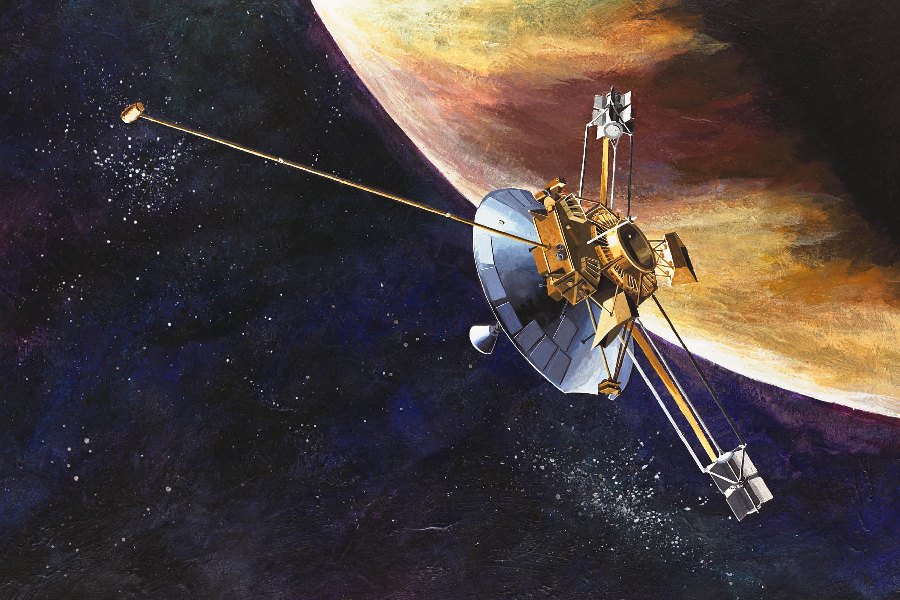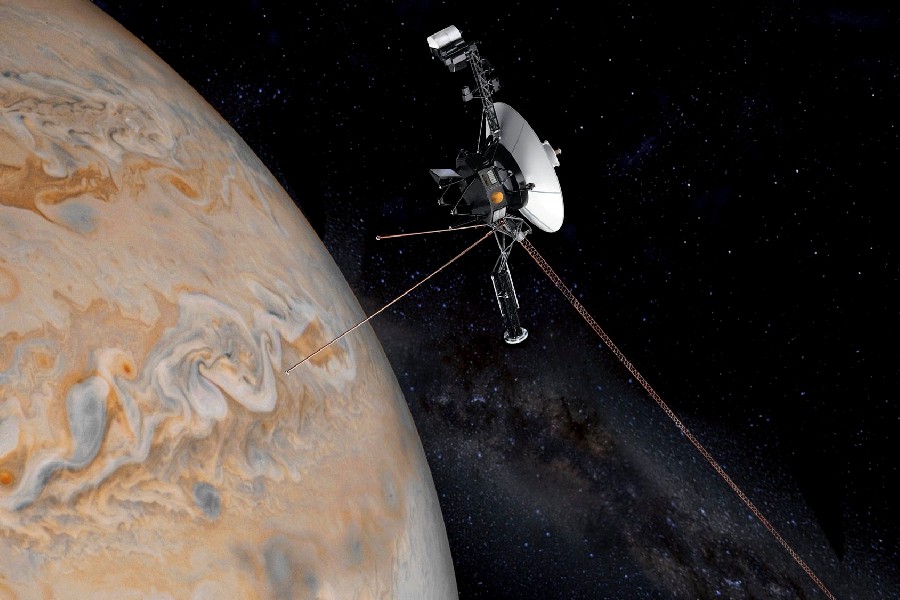Space probes play a crucial role in expanding our knowledge of the universe. By collecting data and images, they allow us to explore several celestial bodies and their composition. But what is their definition? What are space probes, more specifically?
In this article, we’ll provide deeper insight into facts about space probes, starting from early space programs to current advanced missions. You’ll understand the components powering probes’ ambitious travel and work.
Real-world examples shed light on how probes managed interplanetary treks, leading to discoveries that inspire awe. We’ll also illuminate space agencies’ past and present probe technology advancing space exploration.
By the end of this read, you’ll appreciate probes as not just cold metal machines. They encapsulate the wonder of space and our drive to explore the unknown. Probes pave the way for human spaceflight’s future through their groundbreaking cosmic voyages.

What Are Space Probes?
What’s the space probes definition? Space probes are unmanned spacecraft exploring outer space and celestial bodies. Equipped with scientific instruments, they gather data and transmit information back to Earth.
These space probes advance our understanding of the solar system and the universe. Unlike crewed missions, space probes operate in extreme conditions and are used for long-term exploration.
Notable examples include Voyager 1 and 2, contributing valuable insights into outer planets and interstellar space. They play a crucial role in scientific discovery, expanding our knowledge beyond the reach of crewed missions.
Purpose of Space Probes
What does a space probe do? Space probes play a crucial role in space exploration. They conduct close-range observation of planets, moons, asteroids, comets, and space environment phenomena. Probes also conduct imaging and measurement of those targets utilizing onboard instrumentation.
Their primary functions are remote data collection, analysis, and transmission back to Earth. This is done to uncover insights about our solar system and the universe. These insights would be unattainable through Earth or orbit-based observation alone.
Expanding frontiers of knowledge
Probes gather findings using advanced suites of scientific instruments. These findings help answer fundamental questions in areas ranging from planetary evolution and astronomy to astrobiology and astrophysics.
Customized based on their target destinations and science goals, space probes expand human knowledge unlike anything else. This is accomplished by them venturing across cosmic distances we cannot yet traverse with human spaceflight.
The First Space Probes
The initial forays into interplanetary space exploration were conducted by automated robotic spacecraft called space probes in the early 1960s.
These pioneering probes launched by the USA and Soviet Union completed humanity’s first successful flybys and observations of lunar, planetary, and solar destinations. These achievements weren’t replicated by manned crews until much later.
Notable achievements
- First probe launched to another planet – The Soviet Union’s Marsnik 1 launched in 1962 as the first probe sent on an interplanetary trajectory toward Mars. Though contact failed en route, it pioneered attempted encounters with other planets.
- First probe to photograph the lunar far side – The Soviet Luna 3 probe completed a 1959 flyby of the moon, snapping the first images of the previously unseen lunar far side. This revealed that the far side lacks the maria or “seas” visible on the near side.
- First solar orbiting probe – NASA’s Pioneer 6, launched in 1965, became the first probe placed into orbit around the sun to study solar wind, magnetic fields, and cosmic rays. Its groundbreaking solar observations continued for over eight years while in orbit between Earth and Venus.
- Unveiled solar system insights – This array of milestone first feats led to significant discoveries about the composition and space environment of Earth’s neighborhood in the solar system and marked the beginnings of planetary science.
Contributions to space exploration
The engineering advances underpinning these early probe missions paved the way. They paved the way for subsequent space exploration strides happening in later decades. Examples are the Apollo moon landings, Mars orbiter mapping efforts, and probes dispatched to the far reaches of our solar system and beyond.
Just as significantly, the first probes sparked global excitement. They also revealed space travel’s limitless possibilities. This went on to inspire generations of aerospace innovation. This inspiration is still ongoing today, more than 50 years later.

Components of a Space Probe
Space probes require a range of components to successfully fulfill exploration missions. Key elements that power and enable probes, such as energy sources, are critical in their design and functionality.
They also include navigation tools, sensory devices to gather data, equipment allowing data transmission, and propulsion mechanisms. The propulsion mechanisms provide the thrust needed to traverse space.
The specifics in each sub-area enable probes to voyage across our solar system and beyond to uncover insights about planetary bodies, atmospheres, and space phenomena.
Power source
Probes often use radioisotope thermoelectric generators (RTGs) to convert radioactive decay into electricity. RTGs provide steady, long-lasting power across decades of space travel. Probes also carry solar panels to harness sunlight when available.
Careful power budgeting enables probes to operate within extreme distances and sunlight constraints. Hibernating conservation modes and energy-efficient components help minimize consumption.
As technology improves, future probes could travel even farther on limited energy from enhanced solar panels or novel radioisotopes.
Guidance system
Space probes use guidance computers and sensors like gyroscopes and star trackers to continuously monitor orientation and trajectory across vast distances.
Tiny thruster impulses then correct directional drifts to keep antennas facing Earth and stay on course. This precise navigation allows probes to steer through space on multi-year missions with minimal propellant.
Scientific instruments
Specialized instruments like spectrometers, magnetometers, cameras, antennas, and radio detectors gather findings per mission science goals. They map atmospheres, surfaces, magnetic fields, particles, and radio emissions.
The tailored tools target key focus areas. Specific instruments are selected to align with the prime objectives, whether it be analyzing soil composition, high-resolution surface imaging, or monitoring solar wind particles.
Communication equipment
Reach bridging immense space distances relies on high-gain antennas beaming data to Earth in certain frequency ranges. Transmitters amplify radio signals power for deep space detection by dish arrays such as NASA’s Deep Space Network.
Propulsion system
The propulsion system stands as the driving force behind a space probe’s journey, determining its capability to traverse vast cosmic distances and fulfill its mission objectives.
This crucial component relies on advanced technologies, primarily employing either chemical rockets or ion drives to impart the necessary thrust for propulsion after launch.
Design and Structure
Space probes require specialized and robust design to withstand the extremes of space. Hardy yet lightweight materials like composites provide durability while minimizing mass. Thermal controls maintain suitable temperatures despite vastly ranging heat.
Fault protection allows probes to detect issues, recover, and enter safe modes automatically. Thoughtful architecture, arrangements, and hardness accommodate instruments while enhancing the probability of mission success.
With resilience enabling multi-year operation and optimizations for their goals, space probes achieve remarkable exploration across distant destinations.
Structural components
Space probes need sturdy yet lightweight frames to protect instrumentation. Materials like aluminum, titanium, or carbon composites provide strength while minimizing mass. Insulation regulates temperatures within operational ranges.
Micrometeoroid shields guard exteriors from debris impacts. Redundant struts, card cages, and isolation mounts reinforce stability amid vibrations and forces during space travel and exploration.
Design principles
Several key principles guide space probe design. Durability and reliability enable probes to operate for years despite challenges like intense heat, radiation, and zero gravity.
Probes prioritize energy efficiency through elements like solar panels and hibernation modes during cruises. Insights from past missions inform future improvements. Probes are customized based on their specific destination and science goals.
Conclusion
After delving into the key elements of space probe design and functionality, we hope you better understand what are space probes and why they are essential tools for space exploration.
From lightweight yet robust structural components to specialized energy systems, every part of a space probe contributes to enabling missions covering vast distances to study our solar system.
The insights gained from space probes over decades of space travel have helped unravel the mysteries of our planetary neighborhood. As technological capabilities advance, space agencies continue to innovate probe design to conduct cutting-edge science, visiting exciting new destinations.
This article aimed to provide an accessible overview of what goes into developing space probes – the intrepid robotic explorers expanding the frontiers of human knowledge across space. We hope reading it has piqued your interest to follow along on space probes’ remarkable voyages of discovery.
